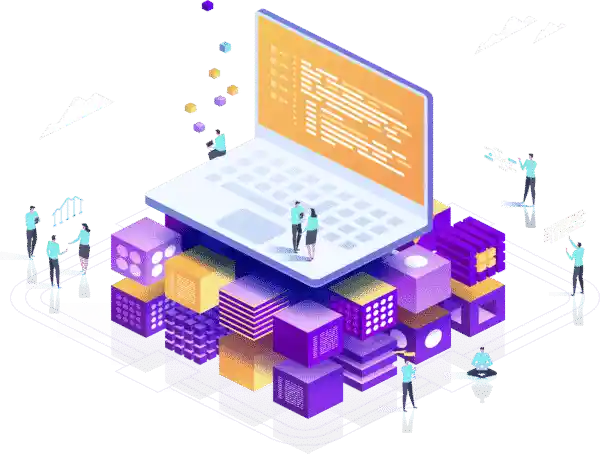In 2023 the digital landscape, where cyber threats loom large and security breaches are a constant concern, an effective vulnerability management program is crucial for safeguarding your organization’s assets and data. However, simply having a vulnerability management process in place is not enough.
With the rise in exploits, ensuring timely vulnerability remediation and risk mitigation is essential, and this is where patch management and automation play a critical role. Establishing a clear vulnerability management SLA (service level agreements), grounded in a robust cvss score, is pivotal.
Challenges in Vulnerability Remediation
Before delving into the significance of this, let’s first define what vulnerability management is and examine the challenges organizations face in vulnerability remediation. Identifying and addressing security vulnerabilities is a complex task that requires coordination among various stakeholders, including your security team, IT department, and asset management teams. Utilizing a reliable scanner and understanding the cvss score are crucial steps. These critical vulnerabilities, if left unpatched, can expose your organization to potential cyberattacks, leading to data breaches, financial losses, and reputational damage.
Why Do You Need Vulnerability Management Service Level Agreements?
Evidence-Based
Setting SLAs for vulnerability management is a strategic move that brings discipline and accountability to your security efforts. It ensures that vulnerabilities are not just identified but are also remediated within specified timeframes. With the aid of automated vulnerability management, this proactive approach is vital for minimizing exposure to cyber risks.
Risk-Based
One size does not fit all when it comes to these agreements. Organizations must align them with their specific risk tolerance, business objectives or even an epss. Prioritizing vulnerabilities based on their severity level and potential impact on the organization is essential. A risk-based approach, endorsed by CISA, enables you to allocate resources effectively and patch the most critical vulnerabilities first.
Goals and SLA
Time-Bound Goals
Goals for vulnerability management should be clear, concise, and time-bound. They set expectations regarding how quickly vulnerabilities should be addressed. For instance, you might establish an SLA that requires critical vulnerabilities to be remediated within 30 days of discovery.
SLA Goals
In addition to timeframes, they should define the goals of vulnerability management. These goals might include reducing the number of open vulnerabilities, minimizing the attack surface, and ensuring that software vulnerabilities are promptly patched.
Continuous Goals
Vulnerability management is an ongoing process. Therefore, the goals should reflect the need for continuous improvement. Regularly reviewing and adjusting your agreements based on the evolving threat landscape and your organization’s capacity is essential for staying effective.
How To Set an SLA for Vulnerability Management
Establishing an SLA for vulnerability management involves several key steps:
- Identify Critical Assets: Begin by identifying your organization’s critical assets. These are the systems, applications, or data that are most essential to your business operations.
- Risk Assessment: Conduct a risk assessment to determine the severity of vulnerabilities and their potential impact on critical assets.
- Resource Allocation: Allocate resources to address vulnerabilities based on their risk level. Critical vulnerabilities should take precedence.
- SLA Definition: Define clear agreements that specify the maximum allowable time for remediating vulnerabilities based on their risk level.

Setting Appropriate Timeframes
When setting timeframes, consider factors such as the complexity of patching, resource availability, and the criticality of the affected asset. While some vulnerabilities may require immediate attention, others may have longer windows for remediation. Striking the right balance between speed and thoroughness is key.
Managing Vulnerabilities with Rootshell Security
At Rootshell Security, we understand the importance of effective vulnerability management. Our approach is rooted in data-driven strategies and risk-based SLAs. We prioritize vulnerabilities based on their severity and potential impact on your organization, ensuring that critical issues are addressed promptly.
Our comprehensive vulnerability management lifecycle includes vulnerability assessment, asset criticality evaluation, and continuous monitoring. We work closely with your security teams to provide real-time insights into your cyber risk, allowing you to make informed decisions and allocate resources efficiently.
By leveraging cutting-edge vulnerability scanning tools and cloud services, we help you stay ahead of emerging threats and maintain a robust security posture. Our commitment to vulnerability management ensures that your organization remains protected against cyber threats.
With our platform, you can measure your remediation efforts against your service level agreements and track key compliance metrics, such as your monthly remediation rate.
- Set and measure
- Monitor compliance using the Compliance Dashboard
- See your best performing system owners ranked on the Compliance Leader Board
- Allow the platform to mark issues as remediated on your behalf with Dynamic Remediation
Measuring the time it takes to remediate issues is an essential part of remediation management. Rootshell’s Platform allows you to set SLAs to measure your team’s remediation efforts against your targets.
You can easily track key metrics, such as how long it takes to remediate critical issues, and the platform notifies you of any issues that are non-compliant.
By measuring TTR, our platform gives you the insight needed to evaluate your team’s performance, resolve any bottlenecks, optimize your processes, and reduce the time it takes to fix issues.
Setting these agreements works hand-in-hand with the range of features designed to reduce your time-to-remediate. The ability to filter and search issues by risk-level enables you to review in the context of criticality, helping you prioritize critical issues.

Achieving SLAs in vulnerability management is not without its challenges. Patch reliability, compliance issues, and resource constraints can hinder the remediation process. However, with the right strategies and tools, these challenges can be overcome. Enhanced patching solutions and monitoring tools can significantly improve your ability to meet goals and measure progress.
In conclusion, vulnerability management is a critical component of your organization’s cybersecurity program. Setting service level agreements for vulnerability management is essential to ensure timely remediation, reduce risk, and align your security efforts with your business objectives. By adopting evidence-based and risk-based SLAs, you can strengthen your organization’s security posture and protect against the ever-evolving cyber threat landscape.
Don’t wait for a security breach to take action. Embrace vulnerability management SLAs as a proactive strategy to safeguard your organization’s assets, data, and reputation.
Subscribe So You Never Miss an Update



